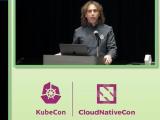CloudNativePG in 2025: CNCF Sandbox, PostgreSQL 18, and a new era for extensions
2025 marked a historic turning point for CloudNativePG, headlined by its
acceptance into the CNCF sandbox and a subsequent application for incubation.
Throughout the year, the project transitioned from a high-performance operator
to a strategic architectural partner within the cloud-native ecosystem,
collaborating with projects like Cilium and Keycloak. Key milestones included
the co-development of the extension_control_path feature for PostgreSQL
18, revolutionising extension management via OCI images, and the General
Availability of the Barman Cloud Plugin. With nearly 880 commits (marking five
consecutive years of high-velocity development) and over 132 million downloads,
CloudNativePG has solidified its position as the standard for declarative,
resilient, and sovereign PostgreSQL on Kubernetes.









